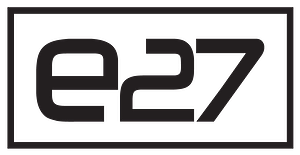Vertical vs Horizontal AI App
Choosing the Right Approach for Your Enterprise ===============================================...
Choosing the Right Approach for Your Enterprise
Artificial intelligence is reshaping how businesses operate, but the types of AI applications available can vary widely. Two dominant approaches have emerged—horizontal AI apps and vertical AI apps. Choosing the right path can determine how effectively AI aligns with your enterprise strategy. Understanding their differences, strengths, and limitations is critical for making informed decisions that deliver meaningful ROI.
Understanding the Two Approaches
What are Horizontal AI Apps?
Horizontal AI apps are designed to serve broad, cross-industry needs. They are typically built to enhance general productivity, automate routine tasks, and streamline workflows without requiring deep domain expertise. Examples include AI copilots for CRM systems, AI-powered email summarizers, generic chatbot platforms, and document automation tools.
The value of horizontal AI lies in its scalability and wide applicability. A horizontal AI tool that works for a retail company can often be deployed in healthcare, finance, or manufacturing with minimal changes.
What are Vertical AI Apps?
Vertical AI apps are built for specific industries, business functions, or niche domains. They embed deep domain knowledge into their models, often trained on highly specialized datasets. Examples include AI systems for radiology diagnostics, AI tools for legal contract review, or AI solutions tailored to optimize supply chains in manufacturing.
Vertical AI delivers domain-specific accuracy and integrates more deeply with industry workflows. It typically offers stronger compliance features for regulated environments and addresses pain points that generic AI solutions cannot solve effectively.
Key Differences Between Vertical and Horizontal AI
Several factors differentiate these two approaches:
-
Scope of use cases: Horizontal AI solves broad tasks applicable across many industries, while vertical AI addresses highly specialized workflows.
-
Level of specialization: Vertical AI leverages industry expertise, while horizontal AI remains general-purpose.
-
Integration complexity: Horizontal AI usually requires lighter integration, whereas vertical AI often connects deeply into core systems.
-
Data requirements: Vertical AI depends heavily on domain-specific data, while horizontal AI can function with more generic datasets.
-
Time-to-value and ROI: Horizontal AI typically delivers quick wins, whereas vertical AI may take longer but yields deeper operational impact.
When to Choose Horizontal AI Apps
Horizontal AI apps are ideal for organizations that:
-
Are in the early stages of AI adoption
-
Need to improve employee productivity across multiple teams
-
Have diverse use cases without heavy domain-specific needs
Benefits include lower entry barriers, faster deployment, and cost efficiency. A horizontal AI copilot, for instance, can boost productivity in sales, marketing, and HR simultaneously without requiring major process changes.
However, the risk is that horizontal AI can remain shallow for highly complex or regulated workflows. It may not meet strict compliance standards or deliver the precision required for mission-critical tasks.
When to Choose Vertical AI Apps
Vertical AI apps make sense for:
-
Industries that are highly regulated, such as healthcare, finance, or legal services
-
Enterprises aiming for workflow automation that goes beyond generic tasks
-
Organizations that require deep insights derived from specialized datasets
The benefits include higher accuracy, improved compliance, and greater differentiation within your industry. For example, a healthcare-specific AI platform can analyze medical images with precision levels that a generic AI tool cannot achieve.
The trade-offs are higher costs, longer implementation timelines, and the potential risk of vendor lock-in due to specialized integrations.
The Hybrid Approach: Best of Both Worlds
Many enterprises are opting for a hybrid strategy that combines horizontal and vertical AI apps. Horizontal platforms such as Microsoft Copilot or Slack AI handle general productivity tasks, while vertical AI solutions are layered on top for mission-critical workflows.
This approach allows businesses to scale quickly with horizontal AI while gaining domain-specific advantages with vertical solutions. For example, a logistics company might deploy a horizontal AI assistant for internal communications and a vertical AI app for route optimization and predictive maintenance.
Strategic Considerations for Enterprise Leaders
Before committing to either approach, executives should assess several factors:
-
Data maturity: Does the organization have clean, domain-specific data to power vertical AI?
-
Integration complexity: Will the AI need to connect with legacy systems or a modern cloud stack?
-
Budget and ROI expectations: Is the focus on quick wins or long-term transformation?
-
Vendor ecosystem: Does the enterprise prefer open platforms that support composability or proprietary models with tighter control?
Aligning AI adoption with business goals, risk appetite, and IT readiness is essential for success.
Future Outlook
The distinction between vertical and horizontal AI is becoming less rigid. Advances in multi-agent systems and composable AI platforms are enabling enterprises to plug specialized models into horizontal frameworks. This evolution will make it easier to balance general productivity gains with deep industry expertise, ultimately blurring the lines between the two approaches.
Conclusion
There is no one-size-fits-all solution when it comes to choosing between vertical and horizontal AI apps. Horizontal AI delivers rapid, scalable productivity improvements, while vertical AI provides deep, industry-specific impact. Many enterprises will benefit from a hybrid approach that leverages both.
The key is to start with a clear understanding of your organization’s data maturity, operational complexity, and strategic priorities. From there, you can chart an AI roadmap that combines quick wins with long-term competitive advantage.



